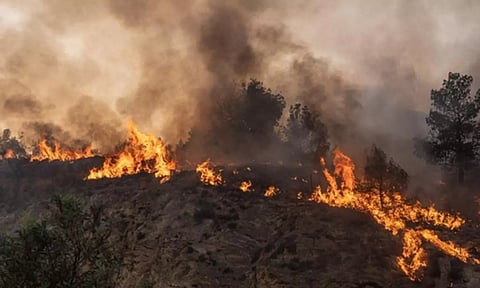

Last week, residents of western Canada scrambled to evacuate their homes as raging wildfires encroached on two metropolitan areas, and the blazes sent thousands fleeing. The devastating fires in British Columbia and the Northwest Territories are the latest additions to a summer of catastrophic wildfires, which left millions of acres scorched. Per estimates, over 19,000 people were evacuated from Yellowknife, the capital of the Northwest Territories in a matter of two days.
Canada is experiencing a record-setting season of wildfires with officials estimating that 34.5 mn acres have already burned down, which is twice the area of the last record of 7.3 million hectares. The fires have emitted unprecedented amounts of carbon dioxide, which has impacted air quality and aggravated breathing issues.
Even in the US, fast-moving wildfires raced through Washington last week, prompting evacuation orders for thousands living in small rural communities. The fires were among 36 blazes that erupted around the state in a matter of 48 hours. This is even as the embers of the forest fire that decimated parts of Maui in Hawaii have barely died down. The environmental and humanitarian toll of the tragedy, which was the deadliest in the US in over one century has exposed several flaws in Hawaii’s initiatives to adapt to climate change.
Across the Atlantic, Europe was scorched, with once-in-a-century wildfires gutting through various geographies. Seven villages near Greece’s northeastern border with Turkey were evacuated due to a large summer wildfire. A similar scene was witnessed in Spain’s Tenerife island, where firefighters struggled to contain a blaze that broke out in a mountainous national park. The blaze has been referred to as the most complex fire in over 40 years, which has consumed over 9,400 acres in a perimeter of 25 miles.
Global warming triggered by humans is exacerbating natural hazards, making them more frequent and deadlier. For those doubting that assertion (like climate change deniers), NASA reported that July 2023 was the hottest known month ever on the planet. Our report card is marked by the highest ever concentration of atmospheric carbon dioxide, the densest quantum of methane, the steepest loss in biodiversity, and mind boggling levels of plastic pollution.
Climate events are taking place in short spells of time. The thresholds forecast by scientists in calculated models are being breached faster than we can respond. Every day, human activity is fundamentally altering the biogeochemical cycles that determine the way life flourishes on Earth — the nitrogen cycle, the phosphorus balance, among other factors. These aspects evolved over millions of years, and we threw a spanner in the works, just over the last few centuries itself.
The International Renewable Energy Agency estimates that $7.5 trillion worth real estate remains endangered due to the risk of global warming. This precipitates other concerns like crop failure (like India’s tomato shortage) and societal breakdown (like Sahel, Sudan in Africa). Climate change has spiked conflicts globally by about 20% and the battles occur over shrinking land, water bodies and other essential resources.
Not that adaptations, mediations and mitigations haven’t been initiated. However, we will need to address political hypocrisy before we proceed as delegates to the COP26 conference were called out for arriving on private jets, which pretty much forfeits their authority to demand others to cut down on their emissions. Like we said, it’s going to get worse, before it gets better.